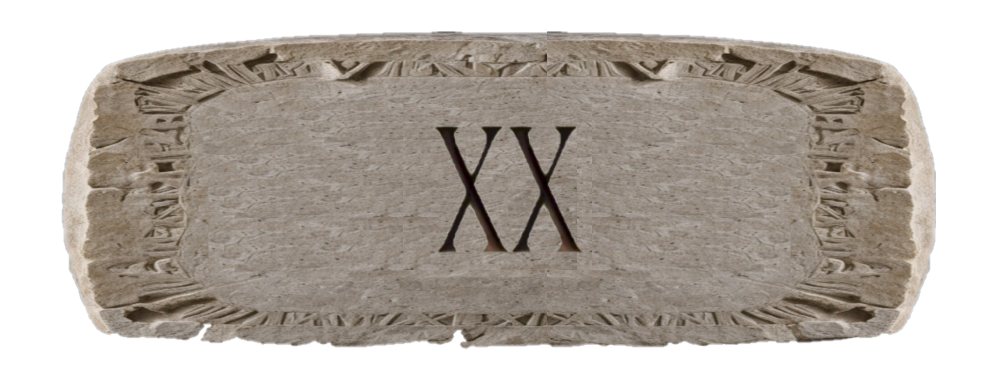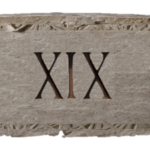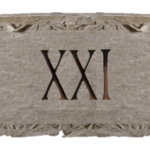Here is the Breakdown of XX
The Roman numeral “XX” represents the number 20 in the decimal (base-10) numbering system. In Roman numerals:

- “X” represents 10.
- Since “X” is repeated, it represents 10 twice, which is 20.
So, “XX” is the Roman numeral representation of the number 20.
Delving into the enigmatic world of Roman numerals, we encounter “XX” – a symbol that, at first glance, seems cryptic yet embodies the essence of the number 20 in our familiar decimal (base-10) system.
To unravel its mystery, one must understand the foundational element of Roman numeral construction: the letter “X”. This character, elegantly simple in its design, is the Roman emblem for 10.
When we see “X” repeated, as in “XX”, it’s not merely a duplication but a significant additive process. Each “X” retains its value of 10, and their juxtaposition is a testament to the additive nature of Roman numerals.
Thus, when we interpret “XX”, we are not just seeing two symbols side by side; we are witnessing the aggregation of two tens, culminating in the number 20.
This representation, “XX”, is more than a mere notation; it’s a glimpse into the Roman way of numerical expression, where repetition and addition play pivotal roles.
The Roman numeral system, with its lack of a symbol for zero and its reliance on the additive principle, offers a fascinating contrast to our modern base-10 system, where place value and zero play critical roles.
In summary, “XX” isn’t just the Roman numeral for 20; it’s a symbol that bridges ancient numerical wisdom with contemporary understanding.
Decimal to Roman Numeral Converter
Roman Numeral:
Here are some fun facts about the number 20:
- Base-20 Number System: Some indigenous cultures, like the Maya civilization, used a base-20 numbering system in their mathematics, as opposed to the more common base-10 system.
- Twenty Questions: “Twenty Questions” is a classic guessing game in which one person thinks of an object, and others have 20 questions to guess what it is by asking yes-or-no questions.
- 20/20 Vision: “20/20 vision” is a term used to describe normal visual acuity. It means that a person can see at 20 feet what a person with normal vision can see at 20 feet.
- Atomic Number of Calcium: Calcium, a vital element for bones and teeth, has an atomic number of 20 on the periodic table.
- Number of Fingers and Toes: Humans typically have 20 fingers and toes combined (10 fingers and 10 toes).
- 20th Century: The 20th century was a period of significant global change, marked by two world wars, technological advancements, and major cultural shifts.
- 20 Questions for a U.S. Census: In the United States, every ten years, a nationwide census is conducted. It includes a list of questions, and traditionally, there are about 20 questions asked.
- 20th Anniversary Gift: The 20th wedding anniversary is traditionally associated with china as a gift theme.
- $20 Bill: In the United States, the $20 bill features the portrait of President Andrew Jackson, making it one of the most commonly used denominations.
- Twenty-Sided Dice (D20): In tabletop role-playing games like Dungeons & Dragons, a 20-sided die, known as a D20, is often used to determine the outcome of various actions and events.
- 20th Century Fox: 20th Century Fox was a major American film studio known for producing numerous iconic films, including the “Star Wars” series.
- 20/20 News Magazine: “20/20” is a long-running American television news magazine program known for its in-depth reporting and investigative journalism.
- 20th Anniversary Gemstone: The gemstone associated with the 20th anniversary is the emerald, symbolizing love and renewal.
- 20 Questions about Literature: “The 20 Questions Book Tag” is a popular book-related challenge on social media where participants answer 20 questions about their reading preferences.
- 20-Somethings: The term “20-somethings” refers to individuals in their twenties, often seen as a period of exploration, self-discovery, and transition to adulthood.


